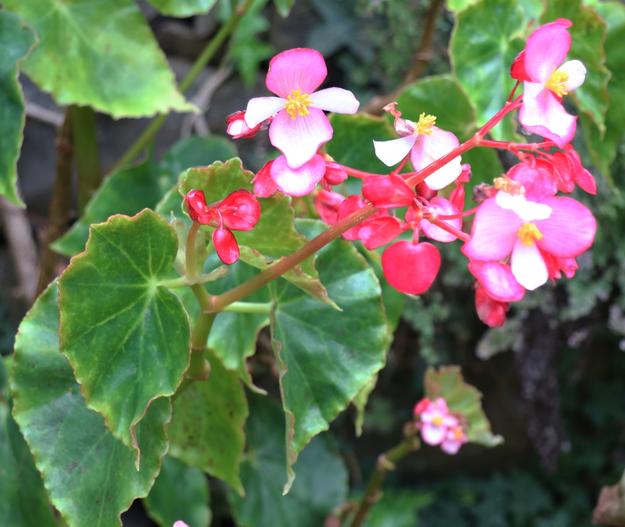Angel Wing Begonia
(Begonia minor)
Angel Wing Begonia (Begonia minor)
/
/

Michael Wolf
CC BY-SA 3.0
Image By:
Michael Wolf
Recorded By:
Copyright:
CC BY-SA 3.0
Copyright Notice:
Photo by: Michael Wolf | License Type: CC BY-SA 3.0 | License URL: https://creativecommons.org/licenses/by-sa/3.0 | Uploader: Michael w | Publisher: Wikipedia Commons









Estimated Native Range
Summary
Begonia minor, commonly known as Angel Wing Begonia or Baby Wing White, is an evergreen perennial herb native to the understory of tropical and subtropical forests in Central and South America. It typically grows to a height of 0.75-1.25 feet (0.23-0.4 meters) and a width of 0.75-1 feet (0.2-0.3 meters). The plant is characterized by its asymmetrical, wing-shaped leaves that are often speckled or variegated and its clusters of white flowers that are quite showy, blooming in the summer and fall. The foliage can also be attractive, with some cultivars having silver spots or red undersides.
Angel Wing Begonia is valued for its ornamental foliage and flowers, which make it a popular choice for indoor plantings, hanging baskets, and shaded garden areas. It is relatively easy to maintain, requiring consistent moisture without waterlogging. It thrives in part shade to full shade and prefers well-draining soil rich in organic matter. While it is not typically grown for its medicinal or culinary uses, it is sometimes used in traditional medicine in its native range. Gardeners should be aware that it can be susceptible to powdery mildew and requires good air circulation to prevent fungal diseases. It is not known to be invasive when grown outside its native range but should be monitored to ensure it does not escape cultivation.CC BY-SA 4.0
Angel Wing Begonia is valued for its ornamental foliage and flowers, which make it a popular choice for indoor plantings, hanging baskets, and shaded garden areas. It is relatively easy to maintain, requiring consistent moisture without waterlogging. It thrives in part shade to full shade and prefers well-draining soil rich in organic matter. While it is not typically grown for its medicinal or culinary uses, it is sometimes used in traditional medicine in its native range. Gardeners should be aware that it can be susceptible to powdery mildew and requires good air circulation to prevent fungal diseases. It is not known to be invasive when grown outside its native range but should be monitored to ensure it does not escape cultivation.CC BY-SA 4.0
Plant Description
- Plant Type: Herb
- Height: 0.75-1.25 feet
- Width: 0.75-1 feet
- Growth Rate: Moderate
- Flower Color: White
- Flowering Season: Summer, Fall
- Leaf Retention: Evergreen
Growth Requirements
- Sun: Part Shade, Full Shade
- Water: Medium
- Drainage: Medium, Fast
Common Uses
Border Plant, Low Maintenance, Potted Plant
Natural Habitat
Native to the understory of tropical and subtropical forests in Central and South America
Other Names
Common Names: Angel Wing Begonia, Baby Wing White
Scientific Names: , Begonia minor, Begonia lucida, Begonia nitida, Begonia nitida, Begonia nitida var. discolor, Begonia nitida var. discolor, Begonia nitida var. pilosula, Begonia nitida var. speciosa, Begonia obliqua
GBIF Accepted Name: